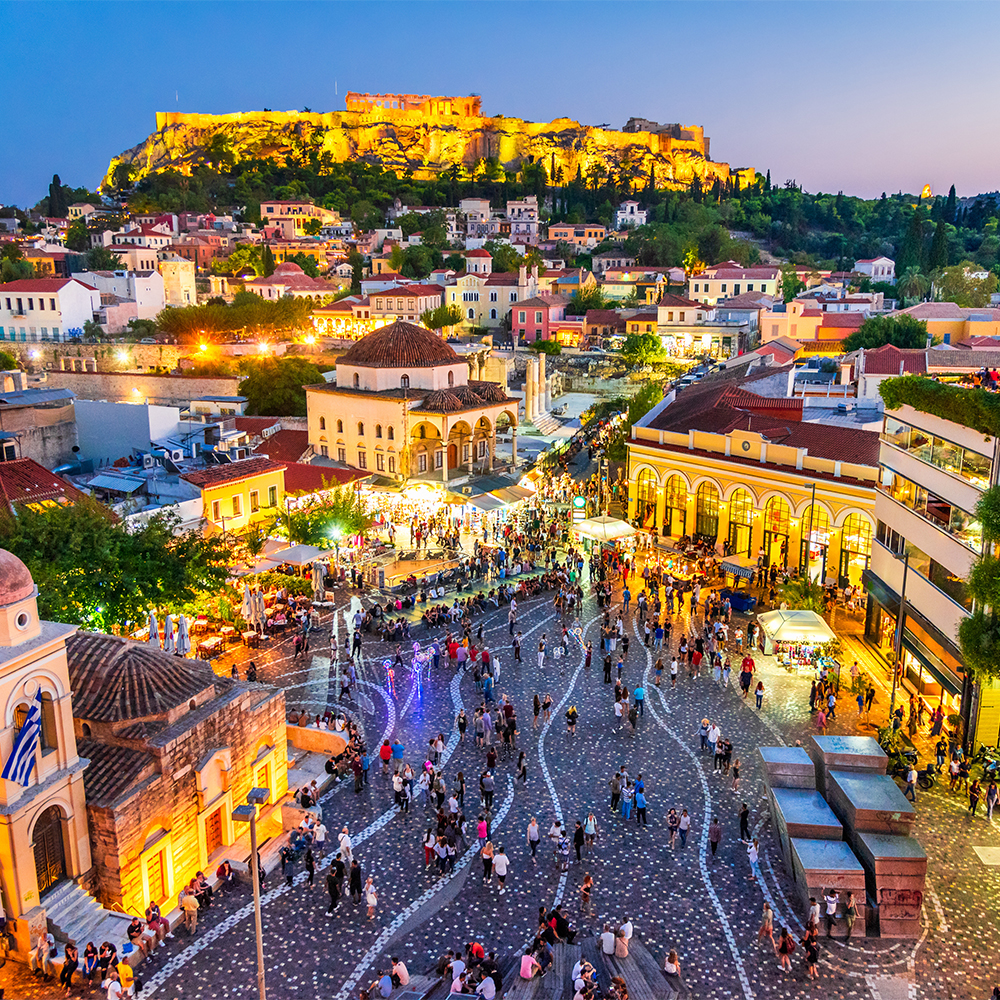Greece






Overview
Greece is located in south-eastern Europe, at the meeting point of three seas: the Ionian Sea to the west, the Mediterranean Sea to the south and the Aegean Sea to the east. The Greek Archipelago takes up 7,500 Km of the country’s total of 16,000 Km coastline, offering a highly diversified landscape of both sand and pebble beaches, sheltered bays and coves, coastal caves with steep rocks, and dark sand typical of volcanic soil and coastal wetlands. Greece has a Mediterranean climate with plenty of sunshine, mild temperatures and a limited amount of rainfall. Due to the country’s geographical position, its rugged relief, and its distribution between the mainland and the sea, there is great variation in Greece’s climate. The first traces of human habitation in Greece date back to the Paleolithic Age. During the Bronze Age, the advanced Cycladic, Minoan and Mycenaean civilizations flourished. This was followed by a dark age marked by invasions, but by the 6th to 4th centuries BC, Greece was enjoying a cultural and literary revival, known as The Classical Period, or Golden Age. This was followed by a long period of internal strife and power struggles, culminating in the Peloponnesian War (431-404 BC) in which the Spartans defeated the Athenians. Both were later overshadowed by Macedonia, under the guidance of the twenty year old King Alexander, who united the Greeks in Asia Minor and conquered Greece’s enemy Persia, as well as Egypt and India. By then he was known as Alexander the Great and this era became known as the Hellenistic Age. Roman incursions into Greece took place from 205 BC and Greece and Macedonia became Roman provinces by 146 BC. Greeks fought the War of Independence (1821-1832). The Greek-owned maritime fleet is the largest in the world, with 3,079 vessels accounting for 18 percent of the world’s fleet capacity. An important percentage of Greece’s income comes from tourism. In 2009, Greece had over 19.3 million tourists, and in 2011, Santorini was voted as ‘The World’s Best Island’ in Travel & Leisure Magazine, with Mykonos, its neighboring island, taking fifth place. Crete, Rhodes, Corfu, the Dodecanese and the Cyclades are some of the most famous and popular islands and island clusters in Greece. Away from the beaches, Greece is also renowned for its archaeological sites, of which Delphi, Knossos, the Acropolis and Olympia are the most popular: Delphi, in central Greece, is set on Mount Parnassus, overlooking the Gulf of Corinth. It was believed by the ancient Greeks to be the center of the world, and its grandest building, the Temple of Apollo, was the most important oracle, with kings, generals, politicians and pilgrims consulting it during the nine warmest months of each year. Knossos is the most magnificent of Crete’s Minoan sites. The Acropolis in Athens was rebuilt during the city’s golden age in the 5th century BC. South of the entrance stands the temple of Athena Nike, built in commemoration of the victory of the Greeks against the Persians. The Parthenon was completed in 438 BC and dedicated to Athena, patron of the city of Athens. Greece is the place to visit as it offers something for everyone.

